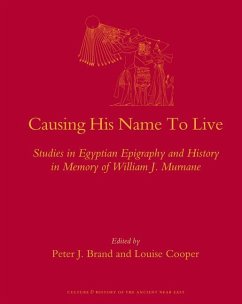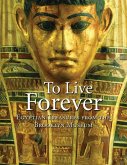William J. Murnane (1945-2000) dedicated his life to the epigraphic recording and historical interpretation of the monuments of pharaonic Egypt. In tribute to his important contributions to Egyptology, a prominent group of his colleagues and students offer a range of new studies on Egyptian epigraphy and historiography. Amarna studies loom large in the volume as they did in Murnane's own work. Several chapters investigate the art, history and chronology of the reigns of Akhenaten and his immediate successors. Other contributions deal with historical issues, especially those connected with the epigraphic and archaeological aspects of the Theban temples of Karnak and Luxor. The book is richly illustrated with photographs and drawings.
Hinweis: Dieser Artikel kann nur an eine deutsche Lieferadresse ausgeliefert werden.
Hinweis: Dieser Artikel kann nur an eine deutsche Lieferadresse ausgeliefert werden.








